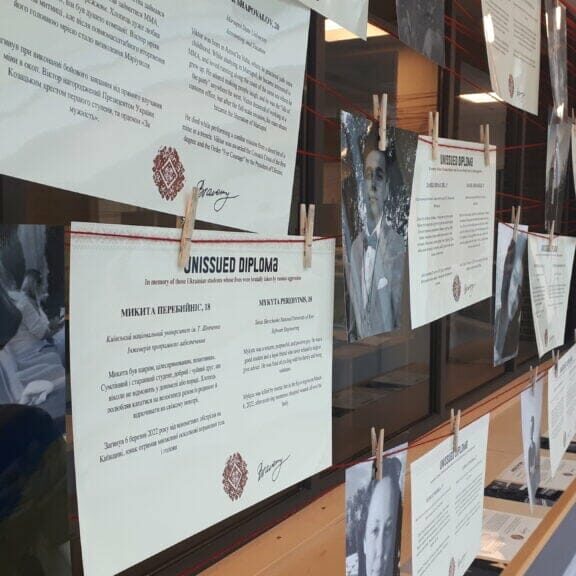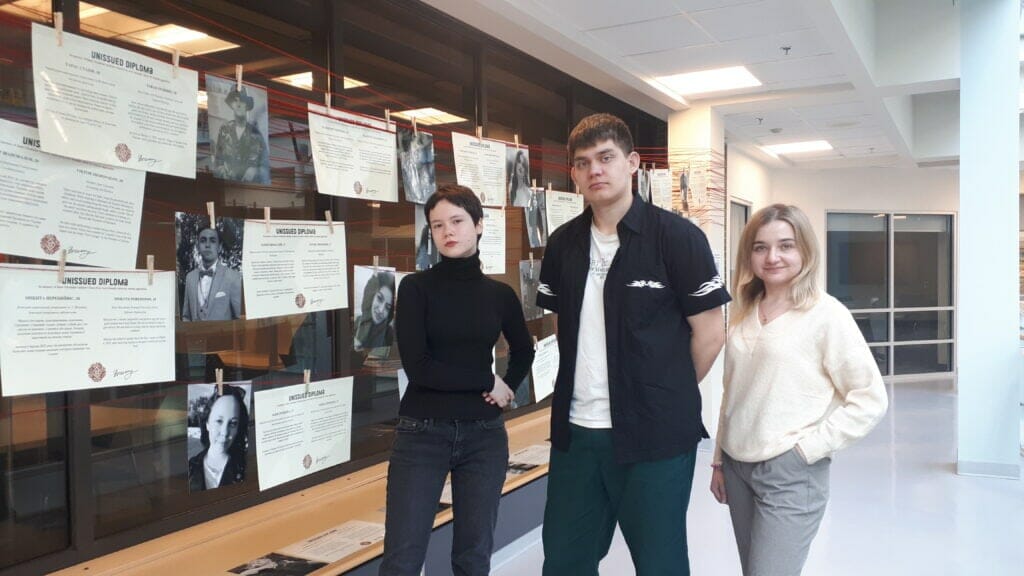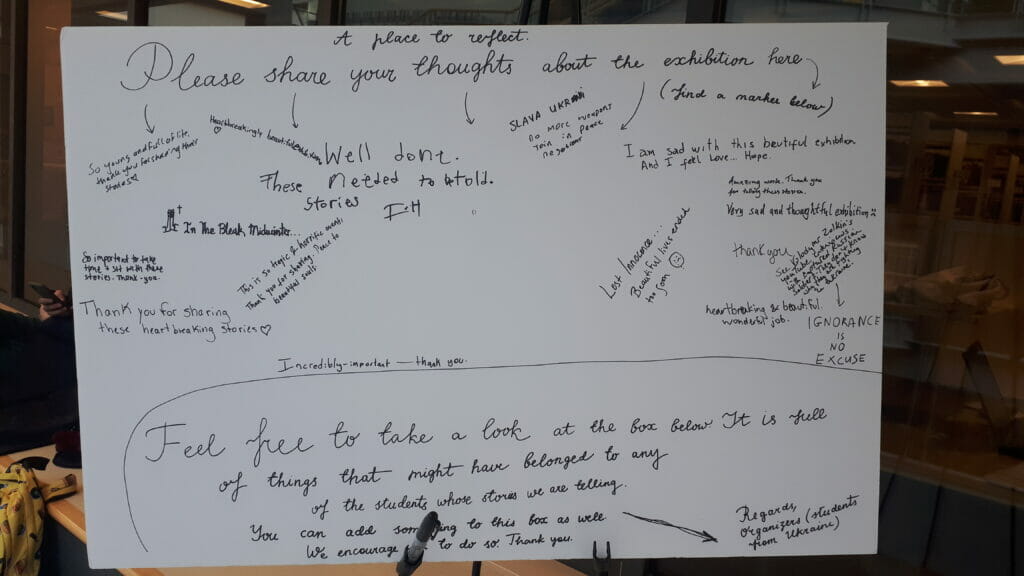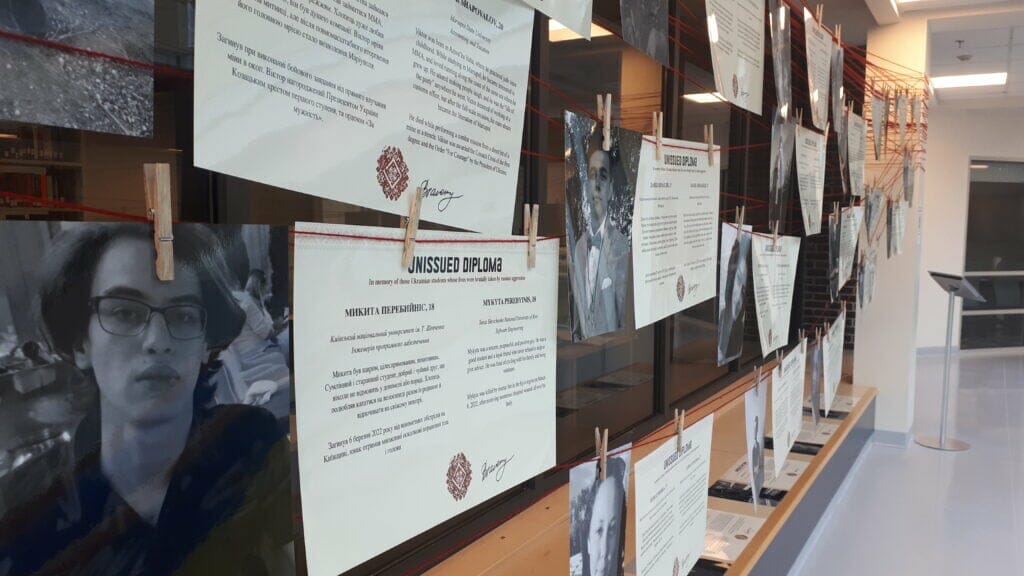
‘The best people die’: Exhibit dedicated to Ukrainian students displayed at SMU
The exhibit ran from March 6-22, will appear at Halifax Central Library in April
Up the stairs on the second floor of the Atrium at Saint Mary’s University, an exhibit greets students with large placards pinned up on red string with the photos and names of students.
Those students were Ukrainians — who were untimely killed during the Russian invasion.
This exhibit is Unissued Diplomas, a worldwide exhibition that issues diplomas posthumously to students who died during the war in Ukraine. The exhibit at SMU was coordinated by Kateryna Rudenko, Yaryna Tylchak and Artem Kichydzhy — research assistants at Dalhousie University from Ukraine.

Personal ties with exhibit’s meaning
The exhibit was developed by the Ukrainian Canadian Students’ Union (SUSK) with the support of the Ukrainian Canadian Congress in Nova Scotia. According to an emailed press release, this exhibit has a worldwide reach at more than 45 universities globally.
Although, the reason for Rudenko, Tylchak, and Kichydzhy organizing this exhibit is much more personal.
“I thought to myself that, you know, we have to do it because also at the time I received news about some students of my university dying on the front line,” said Rudenko, “A lot of people from my university came to mind and a lot of them died.
“I’ve heard from my friends that they have been doing [the exhibit] and it shows the impact for an audience. So I thought to myself [that] we should do this here.”
Tylchak felt similarly, adding she thought this exhibit was critical to highlight the war’s devastation on students in Ukraine.
“It reminds Halifax that wholescale war, a Russian war, is still going on in Ukraine and the best people die in it as you see this. They were very passionate, they had their own ideas,” Tylchak said.
“Russia has left them no choice and [I] suppose what we can do is to come commemorate them.”
For Rudenko, Tylchak and Kichydzhy, the exhibit symbolizes stolen life and commemorates those lost. But they also hope it will combat what they call “Ukraine fatigue” in western countries — where the general public and media potentially get “bored” with the war. As a result, the organizers feel donations to and discussions about what is happening have slowed.


This exhibit is an attempt to spark attention around Ukraine’s war effort and struggles. It also raises money to support the effort. The money raised goes towards the Second Front Ukraine Foundation. This foundation raises money to support Ukrainians on the front lines by providing them with direct, requested support, medical supplies and other necessities.
According to Rudenko, this money is to end the war faster — a war that has been going on for more than a year. Feb. 24 marked one year since Russia invaded Ukraine and almost nine years since the Russian annexation of the Crimea region of the country.
“I’m really hopeful that people will see these faces, feel emotional [and] they would go to the QR code and offer support,” she said.
She said this isn’t just about the Russian invasion or the money to support Ukraine’s army. She hopes people will look at this exhibit, dig deeper into the topic and learn about Ukraine and other countries that have fallen victim to Russian foreign policy.
“Then we will see what actual kind of country Russia is,” Rudenko added.
Positive reception
When asked what the reception to the exhibit has been so far, they all said it has been positive. Rudenko set up a sheet of poster board and a marker for students to comment about the experience. Most comments have been positive and supportive of those fighting in Ukraine.
“When we had this idea to purchase a sheet of paper, for people to write down, I was a little skeptical about this,” Kichydzhy said. “But now, as you can see that really collection of accepting and difficult feelings with the will to express.”
The exhibition ran from March 6-22 at SMU but will open again at the Halifax Central Library in April.






